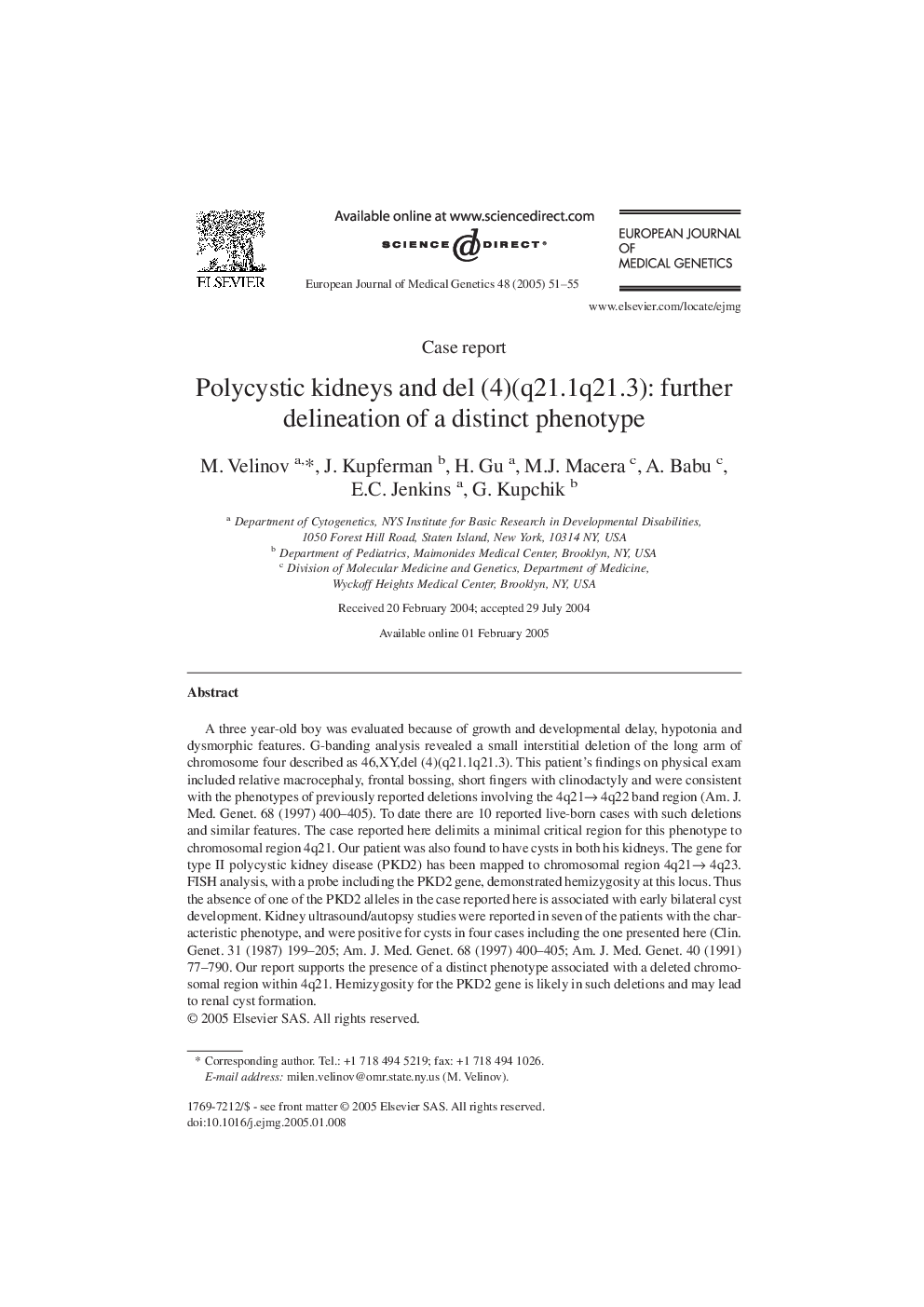| Article ID | Journal | Published Year | Pages | File Type |
|---|---|---|---|---|
| 9935829 | European Journal of Medical Genetics | 2005 | 5 Pages |
Abstract
A three year-old boy was evaluated because of growth and developmental delay, hypotonia and dysmorphic features. G-banding analysis revealed a small interstitial deletion of the long arm of chromosome four described as 46,XY,del (4)(q21.1q21.3). This patient's findings on physical exam included relative macrocephaly, frontal bossing, short fingers with clinodactyly and were consistent with the phenotypes of previously reported deletions involving the 4q21â 4q22 band region (Am. J. Med. Genet. 68 (1997) 400-405). To date there are 10 reported live-born cases with such deletions and similar features. The case reported here delimits a minimal critical region for this phenotype to chromosomal region 4q21. Our patient was also found to have cysts in both his kidneys. The gene for type II polycystic kidney disease (PKD2) has been mapped to chromosomal region 4q21â 4q23. FISH analysis, with a probe including the PKD2 gene, demonstrated hemizygosity at this locus. Thus the absence of one of the PKD2 alleles in the case reported here is associated with early bilateral cyst development. Kidney ultrasound/autopsy studies were reported in seven of the patients with the characteristic phenotype, and were positive for cysts in four cases including the one presented here (Clin. Genet. 31 (1987) 199-205; Am. J. Med. Genet. 68 (1997) 400-405; Am. J. Med. Genet. 40 (1991) 77-790. Our report supports the presence of a distinct phenotype associated with a deleted chromosomal region within 4q21. Hemizygosity for the PKD2 gene is likely in such deletions and may lead to renal cyst formation.
Keywords
Related Topics
Life Sciences
Biochemistry, Genetics and Molecular Biology
Genetics
Authors
M. Velinov, J. Kupferman, H. Gu, M.J. Macera, A. Babu, E.C. Jenkins, G. Kupchik,
